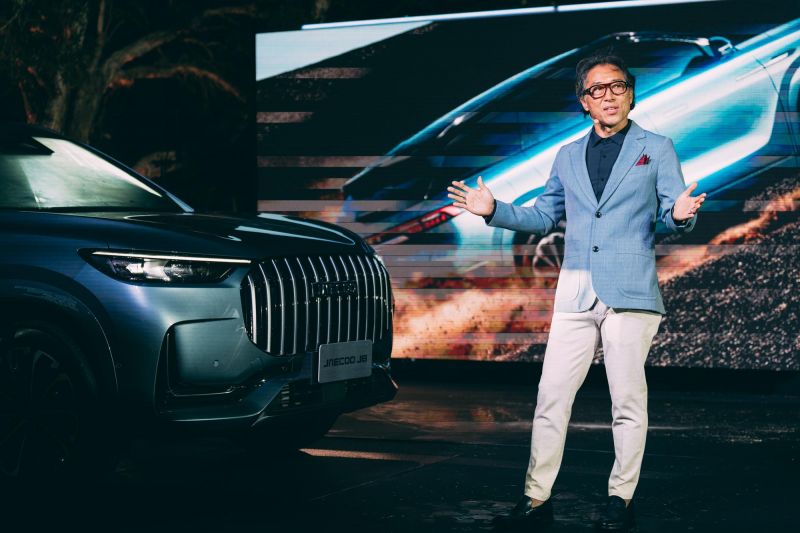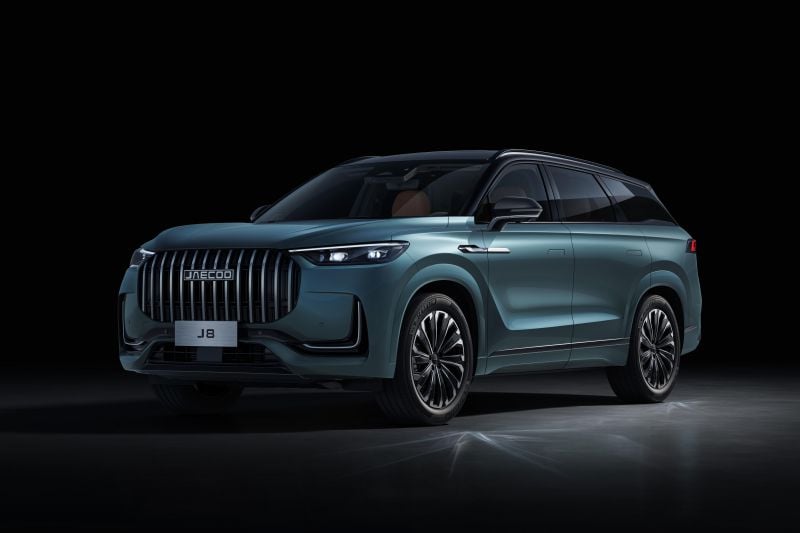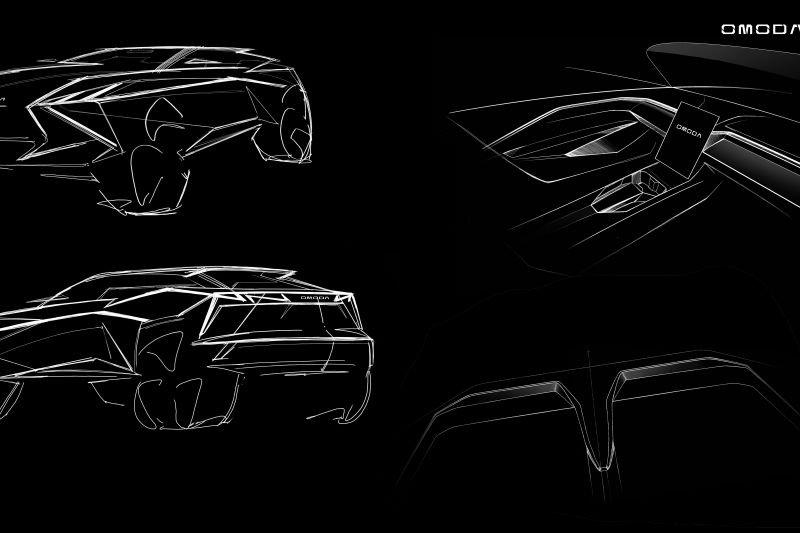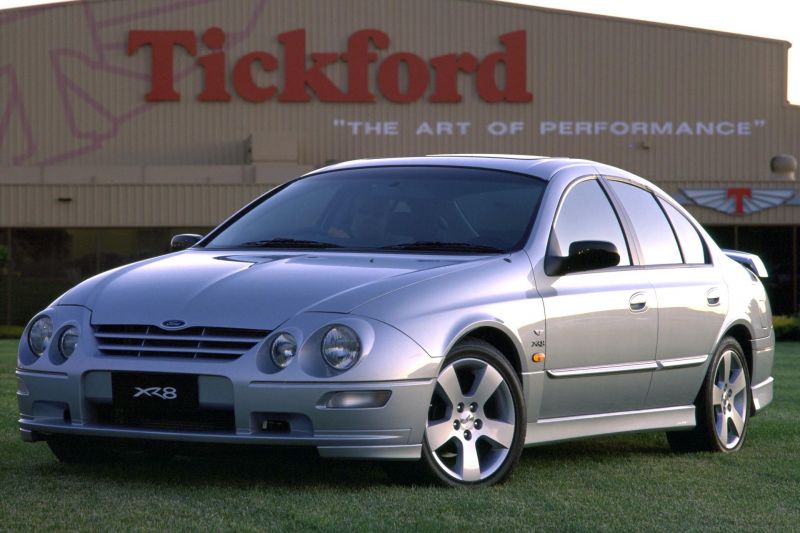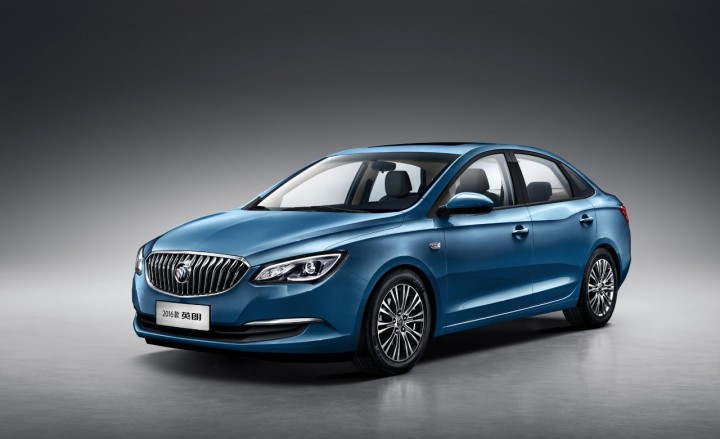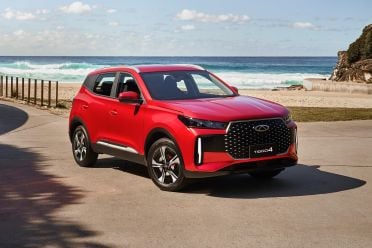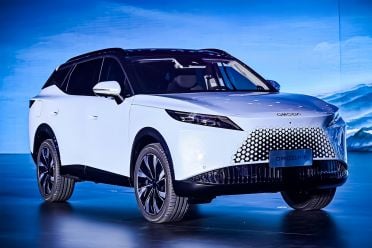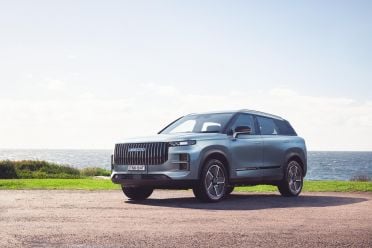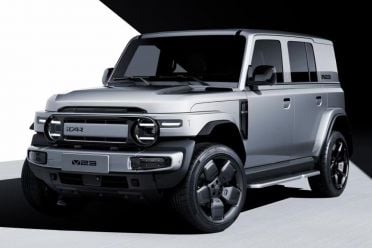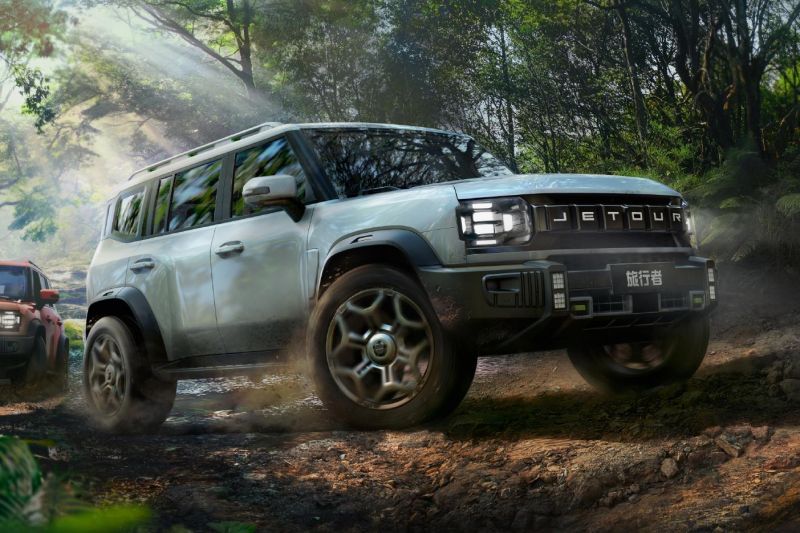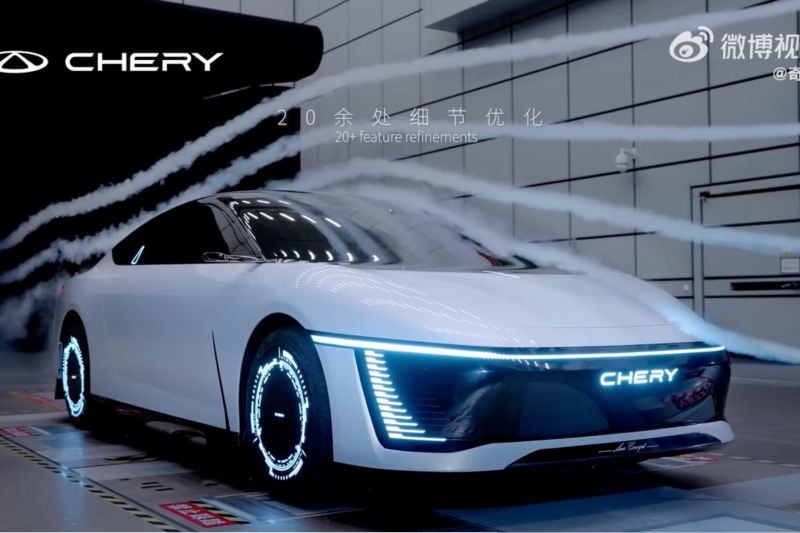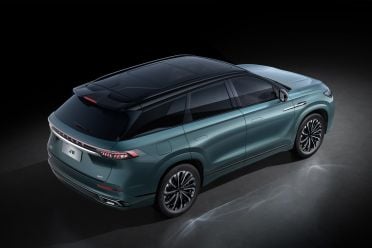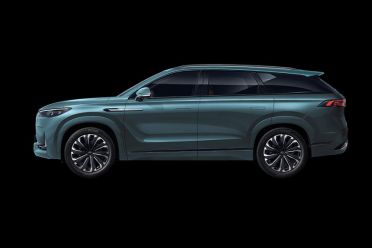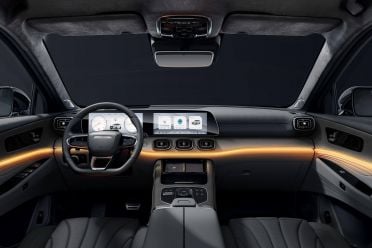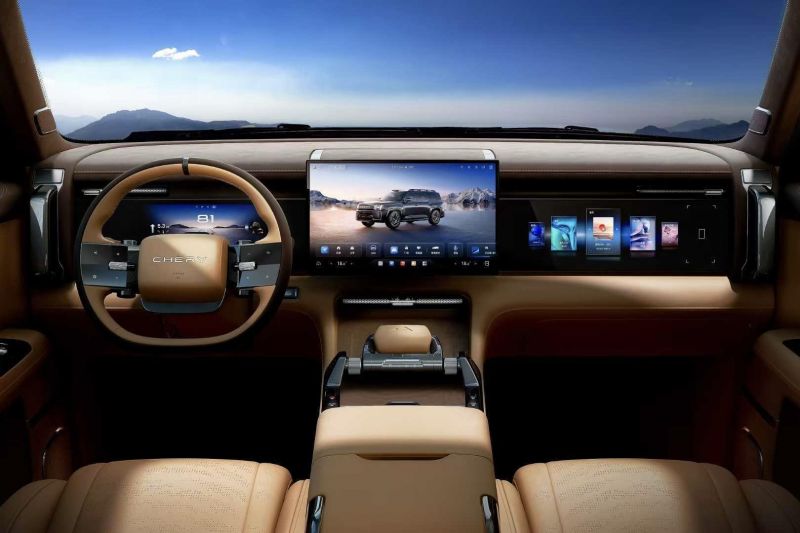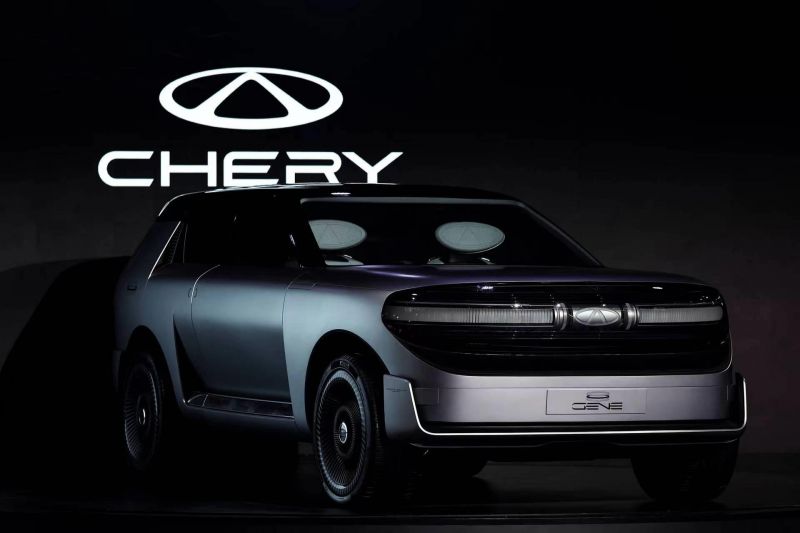Steve Eum has all the hallmarks of a car designer, from his designer glasses to his casual business attire, complete with sockless loafers.
He also has the credentials, with more than 35 years of experience working with some of the world’s largest automotive brands, including a stint here in Australia at Ford’s Broadmeadows design centre.
Hundreds of new car deals are available through CarExpert right now. Get the experts on your side and score a great deal. Browse now.
Born in Korea and raised in Southern California, with a degree in computer science from UCLA and another in transportation design from the prestigious Pasadena Art Center, he is now the Global Vice President of Design at Chery.
We sat down with him during the recent launch of the Jaecoo J8 for an in-depth chat about his career, the rise of the Chinese car industry and the future of automotive design.
First of all, what inspired you to become a car designer? Were you always interested in cars?
Well, to start off, no, I was not interested in cars. In the beginning. I was interested in more of the art and design part. As a young kid, I always loved to paint and draw, but with this cliched Asian family, my parents wanted me to be involved in the sciences.
But I was never really a book nerd. I grew up in a place called Redondo Beach, in Southern California, and was more into the beach lifestyle. In elementary school, I was tasked to paint a mural of a bald eagle on a wall in the handball court to celebrate the American bicentennial. I was probably nine or 10 years old, and that really gave me the taste for being an artist.
When I went to college at UCLA, I studied a bunch of liberal art courses and that’s where somebody turned me on to industrial design. I wasn’t a full car guy yet but loved designing products. And, when I had to declare a major in my final year, I saw a couple of notifications for internships at Chrysler and Ford, which I did, and that’s how it all got started.
For aspiring young car designers, what do they need to know about to begin studying automotive design, and where are the best schools?
I think today there’s obviously a lot more people that are thinking about this career from the beginning because they are car guys. As I said, I was never really a car guy – I just love design.
Back then, I think there was a lot more variety in vehicles, whereas nowadays it is just the SUV and, for some markets, the traditional three-box sedan. We had a lot more freedom to experiment with crossovers.
Anyway, the best schools for automotive design are the Pasadena Art Center in Los Angeles, the Royal College of Art in London, the Center for Creative Studies in Detroit and another one in Germany.
How much knowledge of mechanical, structural and aerodynamic principles do you need, or do you work purely on aesthetics first?
I think the instant connection that anybody has when you buy something is visual, right? You have that immediate attraction. Well, that’s where design plays the key role.
But for any product, whether it’s a tea kettle or a car, you have to understand its function, so it is basically a technical fashion industry.
As a car designer, through school, you do have to learn some knowledge of aerodynamic principles and mechanical engineering, but not to the full of extent of a specialist engineer in those areas.
You learn more about that on the job working with the vehicle engineers, working with the studio engineers, the marketing department… But, yeah, of course, it helps to know the foundations and then design something around it.
What is the process of designing a new car in terms of a timeline? Does it start with you and your team being given a brief for a segment, or platform hard points, before you even start drawing?
I think it really depends on how well the design group department is set up for each company. I mean there are certain CEOs that are very understanding of the design process and are sensitive to the idea of design. And there are other companies that maybe aren’t so prone to that, and more mechanical in terms of how they want to be perceived.
How long does it take from that first sketch to actual production?
Well, for example, the Jaecoo J8 was a bit of a longer process than normal because we were sort of designing on the fly. The company wasn’t sure for a long time whether it should be a medium or full-sized SUV, or whether it was going to be a Jaecoo or an Omoda, so that was a bit confusing.
In a lot of ways, we try to design for every niche and then make sure the International Department actually knows which vehicles they can pick and choose for particular markets.
So, to answer your question, the time it takes varies a lot, from two years to five years, maybe more.
Does the same designer work on both the exterior and interior of the vehicle, or are there separate teams that you oversee as a chief designer?
So, the way a design studio is set up, we have specialists in both exterior and interior design. It’s pretty rare that you have a designer that works on both, because they’ve been trained in a certain discipline.
There are plenty of designers out there that can do both – I have done interiors and exteriors – and that helps to move up in the organisation to, first, become a chief designer of a particular vehicle that oversees the process and then head up a studio and, eventually, a chief designer for the whole brand and/or parent company.
You started your career with Ford and spent time in the Melbourne design studio. What did you work on here, and what did you think of the local automotive industry because Ford and Holden ruled the roost at that time?
So, for part of my early years at Ford, I was in Detroit and then came to Broadmeadows for a year to work with the team on the third-generation [AU] Falcon. After that, I went to Italy to work at Ford’s Ghia studio under Moray Callum.
I loved my time here, but I think back then was a very different time, right? Australians were always interested in raw horsepower, with six-cylinder and V8 engines, and the introduction of the two-door coupe with the pickup back was a real trailblazer.
Now, I still see there’s a passion for souping-up cars. In fact, just the other day I saw a Datsun 1600 that was perfectly rebuilt and lowered. I used to drive a Datsun B-210 when I was a 16-year-old, so to see that was a real eye-opener and made me realise that Australians still have a passion for cool cars.
So, I think that culture is still prevalent here, and that’s what the Chinese market lacks – they have no point of reference, which is why they probably try everything and see what sticks.
Australia has a legacy car culture, just like Japan, or the Korean factor over there. They’re much smaller countries, which makes it easier for them accept a certain design and just go for it. There is no C factor in China, there’s just a variety of vehicles coming out from all the different OEMs.
You started working with Korean brands in the late 1990s, which were then beginning to become more focused on global and export markets. Do you see any similarities between that time and now with Chery?
Not really, because I think the timing is so much more fast-paced. With the Chinese brands, there’s so many of them that if one doesn’t work, we’ll just get rid of it and try another one.
They don’t mind falling over and learning and improving from it.
After a stint in the USA with General Motors, you moved with GM to China more than a decade ago. Was the focus purely on the domestic market back then, and what were the biggest challenges?
So, General Motors was probably the biggest carmaker at that time and they focused on many markets, but China was a force. That was a time when it was rising, and rightfully so. They had the biggest market back then with Chevrolet and Buicks, but now it is completely gone in the opposite direction, which I guess is because of the rapid rise of local Chinese brands.
Back then, it was all about realizing the mass potential – the sales potential – of the Chinese market.
How much of an impact did the transition to electric vehicles have on the Chinese industry? Did it make it easier, considering the vast experience it already had with battery technology compared to the lack of expertise it had with the combustion engine?
I mean Chery does have a very decent petrol engine and, as a matter of fact, they have a lot of patents for petrol and combustion technology. Having said that, I think the Chinese industry as a whole sees the future is going to be EVs and they have built the whole infrastructure around the electric vehicle, from battery technology to battery swapping and charging.
With battery technology, the future is solid-state batteries and once that dominates it will really take off.
More specifically, what are the design philosophies of Chery, Jaecoo, Omoda and iCar? Are they meant to work together and how do they differ from each other?
So, in a theoretical explanation, if you look at a rainbow you can see all the colours. And we’re trying to do exactly the same – trying to focus in on all the niche markets and how its fits with the customer.
For example, we have the two bookends now with Omoda. which is little more younger and sportier and led by style, and Jaecoo, which is a bit more controlled, restrained and mature. We have those two bookends and everything else in between.
Chery is the umbrella with Tiggo being our SUV line, which is more stable or visually comfortable for a mass acceptance of its design. Then you’ve got Omoda, which is a lot younger, more fashionable and trendy.
Now we have Lepas, which is the same in terms of fashion but a little more sophisticated. And then we go all the way to other end to Jaecoo, which pays a lot more homage to the classical SUV style. It’s quieter, more relaxed in its style.
We also have iCar which is special in its own way, like a Mercedes G Wagon which is very raw and purposeful, but I think our take is more comfortable. And, finally, we have Jetour – that’s proper off-road.
Like I said, that’s our rainbow with all these vehicles, not just from a design standpoint but from a configuration, powertrain options and everything else. We’re trying to fill in all the holes
Is there a challenge or freedom in managing those different aesthetics?
There’s a massive challenge, because design wants design and marketing wants marketing and then sales want the numbers to work. And you have other leaders that want to put their stamp on the company’s success.
In a lot of ways, everyone is a designer because they have an opinion, but at the end of the day we’re the ones who kind of stack the cards together.
Is there a difference between domestic and global consumer demands that you have to consider? If so, what is unique about Chinese customers?
In China, there really is no reference point in terms of how a car should be designed, and what it should have in terms of engine and features. I think there is a lot of trial and error in terms of how some of these designs have evolved.
I think the Chinese want a lot of features in their car, whereas outside of China that is not as prevalent, right? With infotainment and gadgets, they love to be surprised.
In a market like Australia, Europe or North America, they have a long history of automotive culture and have matured a bit more. They got rid of a lot of excess that you don’t really need in a vehicle, and want that pure driving flavour and performance.
In China, they like these little avatars in the vehicle. It’s gimmicky, but at the same time very clever marketing, and they love it.
It wasn’t long ago that the Chinese automotive industry was largely copying established European brands in terms of design, but it is quickly maturing to find its own sense of style. Where has that change come from, and what do you think now defines it?
I think there’s still a lot to learn and it is in a very fast transitional state. Yes, there’s still a lot benchmarking against what we call the BBAs – Benz, BMW and Audi – and lessons in how to build brand equity.
In a short period of time, it’s hard to build brand equity but in terms of our visual design – especially for Jaecoo – we want to give that a visual authenticity and pay homage to classic design. That makes it easier for a customer to have an instant connection to the vehicle and be comfortable.
How is digital and connected technology playing a pivotal role in interior design, and does it limit you – or bring more freedom – in creating a uniquely expressive cabin?
I wouldn’t say freedom, but it does open it up for us to really design around the technology.
We’re hoping that we can minimise the distraction that’s involved with a lot of this technology. So, we want to design it with a greater focus on natural interaction; a holistic relationship between the driver, passengers and the car.
I know there are different camps saying we need physical buttons back, while some people – particularly the younger generation – are used to having devices with touchscreen controls. I think there needs to be a bit of balance there and to be discerning, but we also have to accept it going forward.
Similarly, do EVs open up more opportunity for unique packaging and exterior designs?
Definitely. I don’t think we’ve found the full potential of an EV package yet. The skateboard platform means we have this fundamental structure that we can put whatever we like on top of it. And I don’t think the companies have fully seen the potential in that architecture yet because it does involve a lot of heavy investment.
Once that becomes the standard, I think we are going to see some really outrageous designs. Right now, we’re just looking at classic proportions because that’s what we’re used to, and what we grew up with. But in terms of future generations, you never know what will happen. It’s exciting.
Lighting technology has come a long way, particularly over the last decade. How important is it for a vehicle or brand to be instantly recognisable by its light signature?
Definitely. Lighting technology, especially in front lamps, is a key element of design now. The classic design feature is the face of the car, which makes it the most identifiable.
I think now that lighting is become more sophisticated – and we don’t need big front grille openings in electric cars especially – it can also act as some sort of messaging device for safety or driveability, and become more adaptive to its environment and nature.
I think we could utlise that from a graphical step with different shapes and sizes. Consumers could even customise their grille. It opens up a range of options to personalise the look of your car.
How will autonomous driving change the world of car design? If people don’t own their vehicle, does exterior design become pragmatic and interior design and functionality become more prominent?
I think the big question here is how will full automation affect design as a whole, simply because you no longer need to have somebody controlling the vehicle. I think all of that will create some ballistic change to accommodate autonomous driving.
I think the environment of how people interact and use that time is going to be fascinating. Will you take a nap, or even a shower, on the way to work? Will they work like buses, or will they be more like a limousine?
Either way, I think it will make a lot of the vehicles we have today – especially petrol vehicles – more collectible.
Are there any technologies in the pipeline that will give you more design freedom in the future?
I think the pipeline definitely revolves around the internet and how it will play a role in the globalisation of the industry, because everybody has a say in what they like and dislike. In saying that, I don’t believe in global vehicles; I don’t think there is one to suit every market.
When you go into a local market, you have to listen to the customers, get feedback and make some of that fine adjustment. And sometimes you need to make a vehicle just for that market.
I am a global citizen, and I see so many vehicles that are needed in certain markets. Here in Australia, right now, we’re a little bit late with a pickup truck, but we’re learning and we will see what happens.
MORE: Everything Chery


